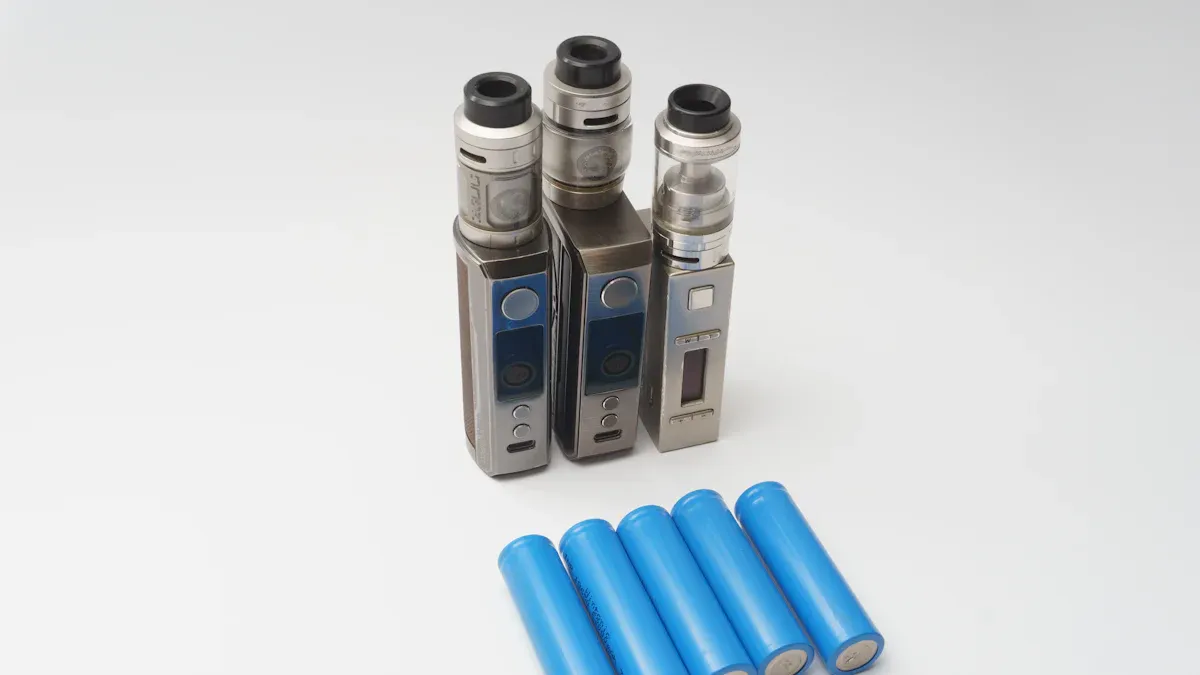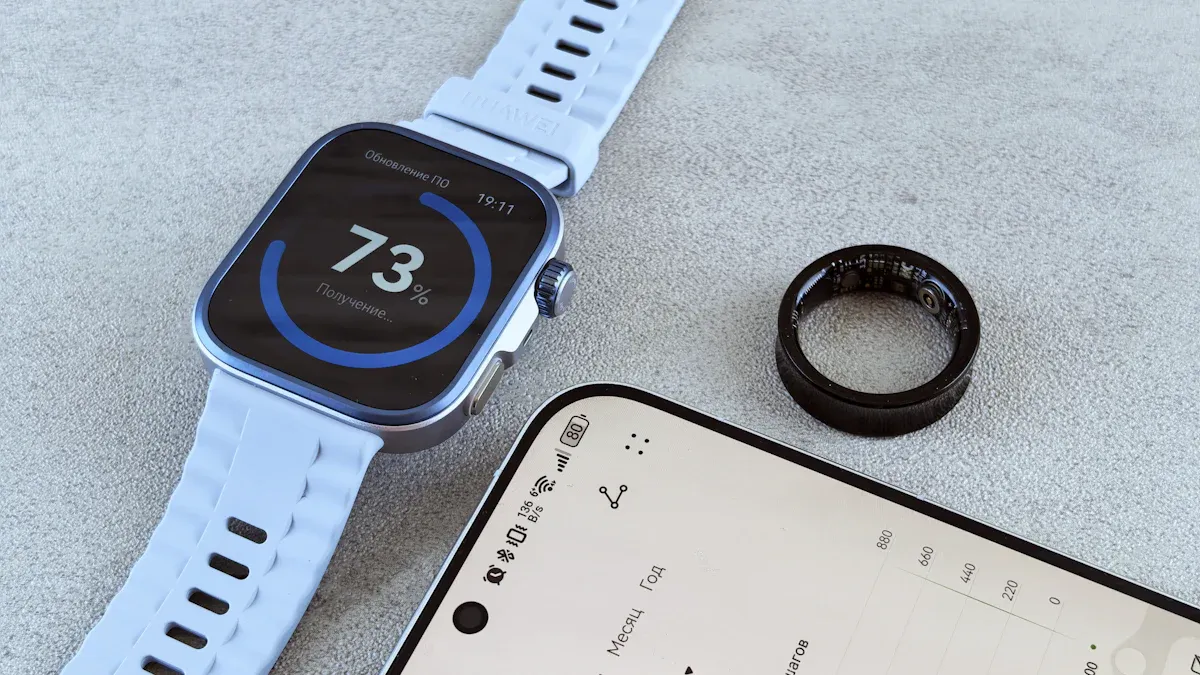
Miniaturized batteries power most portable and biomedical devices today. You see more than 60% of the pin type lithium battery market made up of rechargeable variants, with over 40% of demand from wearable devices. Micro lithium ion polymer battery models and bio-batteries drive innovation through flexible, sustainable designs and improved safety. When you select a battery, size, energy density, safety, and application fit matter most.
The table below compares battery types for portable applications:
Battery Type | Advantages | Applications |
|---|---|---|
Lithium-ion (Li-ion) | High energy density, cost-effective, durable | Smart glasses, gaming consoles |
Lithium ion polymer battery (LiPo) | Lightweight, flexible, lower leakage risk | Wearables, drones |
Key Takeaways
Miniaturized batteries, especially lithium-ion and lithium polymer types, are essential for powering portable and biomedical devices due to their high energy density and compact size.
Safety is crucial when selecting batteries; consider risks like thermal runaway and ensure proper charging practices to enhance battery lifespan and performance.
Bio-batteries represent a significant advancement, offering sustainable energy solutions for medical applications, including drug delivery and cardiac treatments.
Part 1: Miniaturized Batteries Overview

1.1 Li-ion Packs
You rely on lithium-ion battery packs for most portable and wearable electronics. These miniaturized batteries offer high energy density and compact size, making them ideal for medical devices and smart sensors. The most common types include 3.7V and 3.8V micro lithium ion polymer battery cells. You see these used in portable monitors, infusion pumps, smart watches, and cordless devices. The table below shows typical applications:
Battery Type | Application Examples |
|---|---|
3.7V LiPo | Portable monitors, infusion pumps |
3.7V & 3.8V Micro Lithium | Portable sensors, medical devices, smart watches |
Tiny lithium cells | Baby monitoring devices, surgical equipment |
Lithium ion polymer battery packs deliver energy densities from 150 to 260 Wh/kg, with some advanced models reaching 400 Wh/kg or more. You benefit from fast charging and reliable performance. These usb battery pack solutions support sustainable energy goals in healthcare and industrial sectors.
1.2 Ni-MH
Nickel-metal hydride (Ni-MH) batteries provide a sustainable alternative for miniaturized batteries. You get environmental friendliness and long service life. Ni-MH batteries offer good energy density compared to older chemistries, but they fall short of lithium ion polymer battery packs. The table below highlights key points:
Advantages of NiMH Batteries | Disadvantages of NiMH Batteries |
|---|---|
Environmental friendliness | Lower energy density than lithium-ion |
Long service life | Sensitivity to high temperatures |
Low self-discharge rate | Potential for memory effect |
Ni-MH batteries feature better protection against thermal runaway, making them a safer choice for some portable applications. You may select these for devices where safety and sustainability matter more than maximum energy output.
1.3 Coin Cells
Coin cell batteries power many wearable electronics and medical devices. You find them in smartwatches, fitness trackers, hearing aids, and remote patient monitoring equipment. These miniaturized batteries are compact and designed for low-power, long-lasting operation. Popular models like the CR2032 usb battery pack deliver a steady 3 volts, supporting accurate energy delivery for vital data transmission.
Common coin cell applications:
Smartwatches
Fitness trackers
Hearing aids
Medical call buttons
Pacemakers
Insulin pump monitors
Coin cell batteries use lithium, alkaline, silver oxide, or zinc-air chemistries. You choose lithium coin cells for longer use and reliability. These usb battery pack options help you achieve sustainable energy solutions in healthcare and wearable electronics.
Recent trends in miniaturized battery design include soft batteries and on-chip storage. Micro-lithium-ion batteries (micro-LIBs) now use laminated thin film, planar interdigital, and 3D architectures. You benefit from improved ion diffusion, higher energy and power densities, and better stress resistance. These advances support the next generation of sustainable, rechargeable usb battery pack solutions for portable devices.
Part 2: Performance & Applications

2.1 Energy & Size
You need to consider energy density and size when selecting miniaturized batteries for portable devices. The materials used for the electrodes, the physical construction, and the cell format all play a role in determining how much energy a battery can store and how compact it can be. For example, lithium-ion cells come in cylindrical, pouch, and prismatic forms. Each format offers unique advantages for energy density, thermal management, and safety.
The electrode materials (cathode and anode) directly affect energy density.
The construction of the battery cell, including electrode loading and electrolyte efficiency, is crucial.
The choice of cell format impacts both size and energy density.
Larger cells generally provide higher energy density, but you can connect smaller cells in series to maintain compactness while increasing voltage. Smaller cells also help with thermal management, which is important for safety.
Battery chemistry also influences the nominal voltage and optimal charging conditions. For instance, lithium-ion batteries have a nominal voltage of about 3.7V, which allows for a more compact design compared to older chemistries like lead acid. The table below compares common battery chemistries used in miniaturized batteries:
Battery Chemistry | Platform Voltage (V) | Energy Density (Wh/kg) | Typical Cycle Life | Weight Impact | Run-Time Improvement |
|---|---|---|---|---|---|
LCO (Lithium Cobalt Oxide) | 3.7 | 150–200 | 500–1,000 | Light | Long |
NMC (Nickel Manganese Cobalt) | 3.7 | 180–220 | 1,000–2,000 | Light | Long |
LiFePO4 (Lithium Iron Phosphate) | 3.2 | 90–160 | 2,000–5,000 | Moderate | Moderate |
LMO (Lithium Manganese Oxide) | 3.7 | 100–150 | 300–700 | Light | Short |
LTO (Lithium Titanate Oxide) | 2.4 | 70–80 | 5,000–10,000 | Heavy | Short |
Solid-State | 3.7 | 250–350 | 1,000–10,000 | Light | Long |
Lithium Metal | 3.7 | 350–500 | 500–1,000 | Light | Long |
For more on sustainable energy and battery chemistry, see Our Approach to Sustainability.
2.2 Safety & Lifecycle
You must prioritize safety and lifecycle when choosing a battery for portable or biomedical devices. Miniaturized batteries, especially lithium-ion and lithium ion polymer battery types, can present risks if not properly managed.
Thermal runaway can cause fires or explosions due to excessive heat.
Improper charging, especially with non-original chargers, increases failure risk.
Environmental conditions, such as extreme temperatures, can cause swelling or cracking.
Poor manufacturing quality may lead to short circuits and battery damage.
Li-ion batteries contain combustible components, which can create fire hazards.
You can reduce these risks by using a reliable battery management system (BMS), selecting high-quality rechargeable battery packs, and following safe transportation and usage guidelines. NiMH batteries offer better protection against thermal runaway, making them a safer choice for some applications.
The lifecycle of miniaturized batteries varies by chemistry and application. The table below summarizes key differences:
Battery Type | Chemistry | Voltage | Capacity | Size Range | Applications |
|---|---|---|---|---|---|
Lithium-Ion | LCO, NMC, etc. | 3.7V | 200–1200mAh | 10440 to 18650 | Smartphones, medical, EVs |
Nickel-Metal Hydride | AB5 Alloy | 1.2V | 600–2500mAh | AAA to D | Rechargeable household, industrial |
Coin Cell | Various | 1.5V | Limited | LR44, CR2032, CR2025 | Medical, wearables, small electronics |
For responsible sourcing, see our Conflict Minerals Statement.
2.3 Use Cases
Miniaturized batteries power a wide range of portable devices across sectors. You see them in wearables, medical equipment, IoT sensors, and industrial monitors. The table below highlights key use cases:
Sector | Use Case Description |
|---|---|
Wearables | Power fitness trackers, smartwatches, and health monitors for continuous data collection. |
Medical | Essential for devices like pacemakers and drug delivery systems for reliable operation inside the body. |
IoT | Used in environmental sensors and smart agriculture devices for remote operation and data transmission. |
Industrial | Supports industrial monitors and portable communication devices in challenging environments. |
Consumer | Powers compact gadgets like wireless earbuds and cameras, benefiting from lightweight, high-capacity batteries. |
You benefit from flexible batteries in wearable medical devices, such as smartwatches and biosensors for health monitoring. Stretchable batteries support soft robots and worker safety monitors in factories. Fitness bands use these batteries for enhanced comfort and longer life.
Miniaturized batteries enable new functionalities in portable and biomedical devices. You can use them for drug molecule release, heart defibrillation, and microrobotic energy delivery. Biocompatibility ensures safe interaction with biological tissues, while biodegradability allows for safe disposal after use. Remote control features enable precise operation in minimally invasive procedures.
2.4 Portable Bio-Battery
Portable bio-battery technology is transforming the landscape of biomedical and on-chip devices. You can use a miniaturized bio-battery to power drug release systems, heart defibrillation, and microrobots for minimally invasive procedures. These bio-batteries offer biocompatibility and biodegradability, making them ideal for medical implants and temporary devices.
Application | Description |
|---|---|
Drug release | Enables controlled release of medication in a biocompatible manner. |
Heart defibrillation | Provides a power source for defibrillation in cardiac treatments. |
Microrobots | Powers small robotic devices for minimally invasive procedures. |
Mobile energy carrier | Incorporates magnetic particles to transport energy efficiently. |
Wireless cardiac treatment | Demonstrated potential in managing cardiac arrhythmias in animal models. |
You can also find portable bio-battery solutions in bio-energy devices that support self-charging and sustainable energy goals. These batteries are essential for powering next-generation bio-energy devices in medical, robotics, security systems, infrastructure, and industrial sectors. For the latest scientific advancements in bio-battery research, visit Nature.
Miniaturized batteries and portable bio-battery innovations are driving the future of sustainable, rechargeable, and high-performance portable devices.
You see lithium-ion, LiFePO4, NMC, LCO, LMO, and LTO battery chemistries deliver high energy density, long cycle life, and safety for portable devices. Bio-battery innovations offer self-charging and sustainability.
Choose a battery that meets UN 38.3 and IEC 62660 standards.
Review sustainability and conflict minerals topics.
Trend | Description |
|---|---|
Miniaturization | Drives compact battery design for B2B needs. |
FAQ
What factors should you consider when choosing a miniaturized battery for your device?
You should evaluate energy density, size, safety, and compatibility. Select a battery that matches your device’s voltage, cycle life, and application requirements.
How do lithium battery chemistries like LiFePO4 and NMC impact device performance?
LiFePO4, NMC, LCO, LMO, and LTO chemistries offer different platform voltages, energy densities, and cycle lives. Your battery choice affects run-time, reliability, and safety.
Why do B2B applications prefer lithium battery packs over other types?
Lithium battery packs provide high energy density, long cycle life, and stable voltage. You benefit from reliable power for medical, industrial, and IoT devices.




